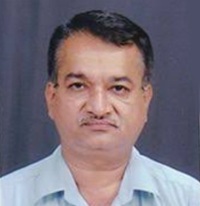Laser Prostatectomy: BPH Symptom Relief

Treatment Duration
45 Minutes
------ To ------90 Minutes
Treatment Cost
₹ 60,000
------ To ------₹ 1,70,000

Table of Contents
- What is Laser Prostatectomy?
- What are the Benefits of Laser Prostatectomy?
- Who needs Laser Prostatectomy?
- What May Happen if Laser Prostatectomy is Not Treated in Time?
- How is Laser Prostatectomy Performed?
- What To Expect Before Laser Prostatectomy?
- What Happens During Laser Prostatectomy?
- What to Expect After Laser Prostatectomy ?
- What is Recovery Process After Laser Prostatectomy?
- When to consult the Doctor?
You can check Laser Prostatectomy Cost here.
What is Laser Prostatectomy?
Laser prostate resection surgery is performed to relieve men suffering from a condition called Benign Prostate Hyperplasia or BPH. In layman's terms, this means that the prostate gland enlarges, giving rise to urinary problems like difficulty in urinating, increased frequency of urination at night, a weak urine stream or inability to empty the bladder. In this surgery, a probe is inserted via the tip of the penis through the tube that empties urine, and a laser is passed to shrink or remove excess growth of the prostate.
Expert Doctors (10)
NABH Accredited Hospitals (10)


What are the Benefits of Laser Prostatectomy?
- Lowers the risk of bleeding.
- Patients need to stay in the hospital for a shorter period. Doctors discharge the patients on the same day or, at the most, ask them to stay overnight.
- As there are no cuts made on the body, recovery from the surgery is faster than the other open surgery methods.
- All patients undergoing surgery for prostate enlargement need catheters to empty urine from their bladders. Those who have undergone the laser procedure need these tubes only for a shorter period.
- There is an immediate improvement in the patient's condition after laser surgery.
- Laser surgery offers safety from cardiac side effects.
Who needs Laser Prostatectomy?
Generally, men showing the following symptoms may likely be candidates for laser prostate resection surgery.
- Slow urination
- Frequent stops and starts while urinating
- Having to urinate multiple times at night
- A frequent need to pass urine
- Unable to empty the bladder
- Difficulty in starting to urinate
- Urinary tract infections
What May Happen if Laser Prostatectomy is Not Treated in Time?
Doctors advise patients to get the surgery done as soon as they encounter this problem. Delaying the surgery might result in multiple problems that are given below:
- Recurring urinary tract infections
- Damage to the kidney or bladder
- An inability to pass urine at all
- Being unable to control urine
- Stones in the bladder
- Presence of blood in the urine
How is Laser Prostatectomy Performed?
There are three types of laser surgeries for prostate resection:
- Photoselective vaporisation of the prostate (PVP)
- Holmium laser ablation of the prostate (HoLAP)
- Holmium laser enucleation of the prostate (HoLEP)
Photoselective Vaporisation of The Prostate (PVP)
- The patient is placed in a supine position with legs raised.
- Doctors administer general or spinal anaesthesia depending on the patient's condition.
- Doctors use laser beams to melt the excess prostate tissue in this procedure.
- The doctor inserts a cystoscopy through the tip of the penis. This allows the doctor to see the prostate and its growth very clearly.
- A thin fibre is inserted through the cystoscope to deliver the laser towards the place where there is excessive gland growth.
- The blood in the area gets heated, resulting in the vaporisation of the tissues.
- Doctors continue the process till the laser burns enough tissue to remove the block in the urethra.
- There is minimal bleeding as blood vessels get automatically sealed by the heat.
Holmium Laser Ablation of The Prostate (HoLAP)
- Patients are placed on their backs with their legs raised.
- Spinal or general anaesthesia is given based on the patient's condition.
- A cystoscope is inserted through the tip of the penis to see the enlargement area.
- The Holmium laser is directed at the area of excessive growth through a thin fibre.
- Blood gets heated with the laser beam, vaporising excess tissue.
- There is very less bleeding in this procedure also.
Holmium Laser Enucleation of The Prostate (HoLEP)
- The patient lies on his back with both legs raised.
- The type of anaesthesia is decided by the specialist based on the patient's condition.
- Doctors use the same Holmium laser in this procedure also for the Total removal of the tissue.
- Unlike HoLEP, in this surgery, the tissue is cut and removed like the open prostate surgery, but no incision is made.
- The laser is passed through the thin fibre that goes inside the cystoscope.
- This method is suitable for prostate enlargement of any size.
- Doctors remove the cut portion of the tissue using a morcellator that sucks the tissue from the bladder.
The choice of procedure depends on the doctor and the severity of the condition. While PVP and HoLAP melt away the tissue, HoLEP allows doctors to cut and remove the pieces. This helps the doctors send the portion for further analysis.
What To Expect Before Laser Prostatectomy?
- As with any surgery, the patients must undergo preparatory steps before the surgery. It is done under the advice of the doctor.
- The doctor informs the patients about the surgery and the detailed procedure.
- Patients should inform the specialist about the medicines he regularly takes for various conditions (if any). The doctor may advise stoppage of certain medicines.
- A transrectal ultrasound is performed to know the exact level of prostate enlargement.
- Tests are conducted to check the urine flow and level of urine remaining in the bladder.
- Blood analysis is done to determine the amount of prostate-specific antigens (PSA).
- Depending on the patient's symptoms, a urodynamic test is done to assess the working of the bladder.
- The patient needs to fast from midnight before the day of the surgery.
- Assistants move the patient to the operation theatre for further preparation.
What Happens During Laser Prostatectomy?
- The patient is dressed in sterile clothes for the procedure.
- Doctors instruct the patient to lie on his back with the legs raised.
- The anaesthetist administers general or spinal anaesthesia.
- Vital signs are constantly monitored.
- The specialist inserts a cystoscope to view the area and assess the enlargement.
- The laser is directed at the excess growth and vaporised or removed.
- A catheter is attached to the bladder for the removal of urine, as post-procedural swelling can prevent the normal flow of urine.
What to Expect After Laser Prostatectomy ?
- Patient is kept under observation for a few hours.
- He is typically discharged after a few hours if there are no other complications.
- It is likely that there is a burning sensation at the tip of the penis when urinating for a couple of days.
- The presence of blood in the urine is possible for a few days to a week after the surgery.
- The patient is advised to take a lot of water to clear the urine as early as possible.
- Doctors ask patients to refrain from heavy work for at least two weeks.
- Patients must avoid sexual activities for two to three weeks. They may experience a lack of volume (of semen) for some time, but it doesn't affect the orgasm or sexual pleasure.
What is Recovery Process After Laser Prostatectomy?
Recovery Process
- Urinary incontinence is possible in many patients undergoing HoLEP surgery, and it is advised to wear pads for the first few days. This disappears soon.
- Kegel exercises can greatly reduce leakage while coughing or sneezing.
- The level of incontinence depends on various factors like age, other health issues and prostate size.
- There is generally no effect on erectile function.
- Most patients can get back to normal work after two weeks.
- Patients can undertake walking and other light activities but must refrain from strenuous work for three to four weeks.
Follow Up Appointment
- Doctors see the patients after six weeks to assess the change.
- A repeat examination is done after six months to see if there are any positive or negative changes.
When to consult the Doctor?
In the following cases:
- Fever higher than 101 degrees.
- An increased frequency of urination or pain while urinating.
- The passage of blood clots or severe bleeding
- Urinary tract infection
- Scars of the treatment can cause blocking of the urethra needing additional treatment.
- Dry orgasm
- The semen enters the bladder instead of the penis during ejaculation preventing the chances of fathering a child.
- A small percentage of patients might experience erectile dysfunction.
- The gland may grow again requiring follow-up treatment.
- Losing control over urine leakage
More Treatment options
Last Updated on: 13 October 2025
Author
HexaHealth Care Team
HexaHealth Care Team brings you medical content covering many important conditions, procedures falling under different medical specialities. The content published is thoroughly reviewed by our panel of qualified doctors for its accuracy and relevance.
Latest Health Articles























